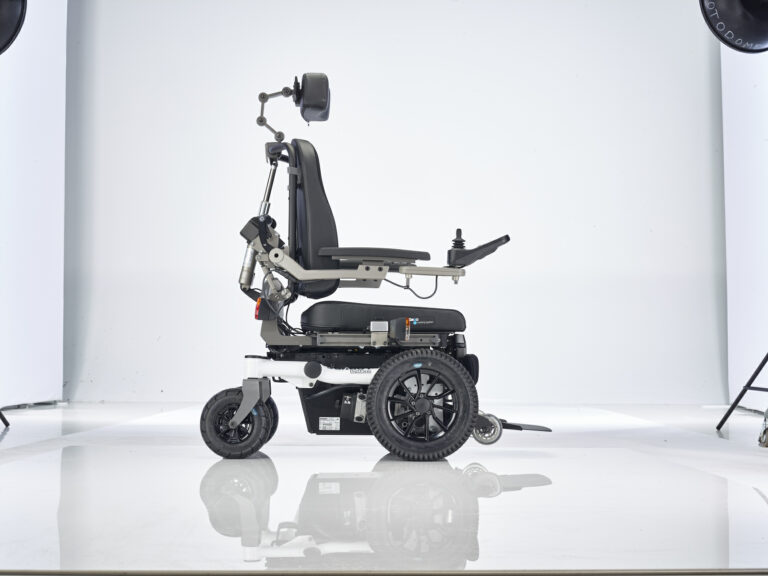The wheelchair is one of the most influential, life-changing inventions in human history. Yet it is somewhat mind-boggling to think that it has only been used over the last five centuries, and that before the ill-health and mobility limitations of powerful people demanded its invention, there was little that people with disabilities could do to move in the world easier.
Beyond that, however, has been the invention of the electric wheelchair, allowing for even better accommodation of mobility situations for numerous people. This article explores, in brief, how the wheelchair itself came to be, when electricity was first used as a development of the wheelchair, and what the future might hold.
The Invention of the Electric Wheelchair
The Wheelchair
The wheelchair itself is a hard invention to determine exactly when it was made. However, there is evidence that mobility devices were used as early as the time of the Ancient Greeks. Early Modern rulers like King Philip of Spain and Henry VIII were known to have had elaborate chair designs made to help them maintain mobility in their ill health.
Later in 1655, a self-propelling chair was created by a watchmaker that pivoted on three wheels. The first patent for a ‘wheelchair’ with back wheels and front casters dates back to the Victorian era in 1869, and further improvements were made from then on. One important chapter in the history of the wheelchair was the invention of the folding chair in 1932, by an engineer named Harry Jennings, which set the standard for mobility chairs ever since. Having built the chair for his close friend Herbert Everest, a paraplegic, the pair went on to found Everest & Jennings, a titan of the wheelchair market.
The Electric Wheelchair
Although the first motorised power chair was officially recorded in London in 1916, it was a Canadian named George Klein who is credited for having designed and created the world’s first electric-powered wheelchair. Another watchmaker-turned-inventor, having grown up in his father’s watchmaking store, Klein had an eye for mechanics, constantly tinkering with everyday items, observing the inner workings of devices like these to figure out solutions to mechanical problems.
Klein went on to contribute a great deal of practical knowledge to applied mechanics, including other mobility devices, a microsurgical staple gun, a STEM antenna and nuclear reactors. However, he was revered for his contribution as a part of the team of engineers that designed and presented the first ‘motorised’ chair to the National Research Council of Canada (NRCC) in 1929.
The Development of the Power Wheelchair
There were more developments to come, however. Although the NRCC saw a demonstration of the first electric-powered wheelchair in 1929, it would not be until 1952 that this invention was patented and publicly available. The distribution of mobility devices was largely operated by the firm Invacare, who had brought wheelchairs to people across Europe since the late 19th century. Once the electric wheelchair was acknowledged as a practical success, its influence spread to the USA and eventually across the world.
In the latter half of the 20th century, the developments of electric wheelchairs mainly fell around customising their weight and frame design. One example of this is the ‘Quickie’, a rigid-frame wheelchair that made waves across the industry in 1979 with its lightweight materials, bold colours and unique design that both improved performance and enabled an eye-catching aesthetic for the electric wheelchair. Alongside this model was the must-have ‘Hall’s Racing Wheelchair’ which would go on display in New York’s Museum of Modern Art (MoMA) in 1986.
The Future of Electric Wheelchairs
So, what does the future hold
Wheelchair technology is not slowing down. It might seem far-fetched, but soon it may be possible that users are able to operate an electric wheelchair or mobility device with little to no movement at all. A new technology has been introduced by John Donoghue and Braingate called ‘The BrainGate device’, otherwise known as BCI (brain-computer interface). BCI uses an implant inside the user’s brain, which then connects to a computer through which the person in the chair can send mental commands to direct the movement of the chair.
Alongside this, in 2021 a South Korean company named Guru created the world’s first self-driving wheelchair. By using the concept of ‘digital twinning’, maps data stored on a cloud-computing platform that can be accessed by a wheelchair. No internet connection is needed, and the chair can transmit and receive data in real time. Whether that gives wheelchair users pause for thought or cause for concern, we’re not quite sure yet.



